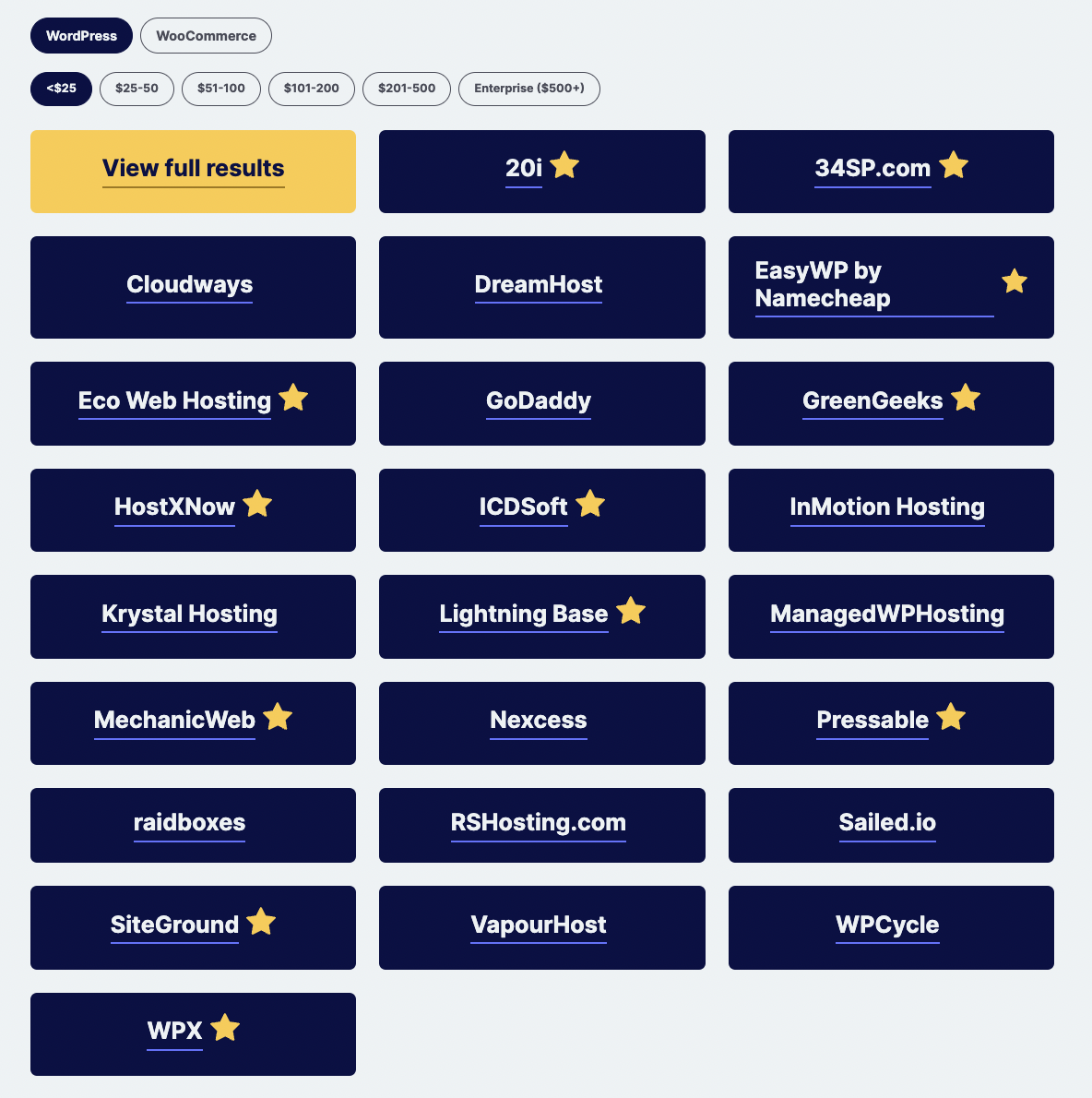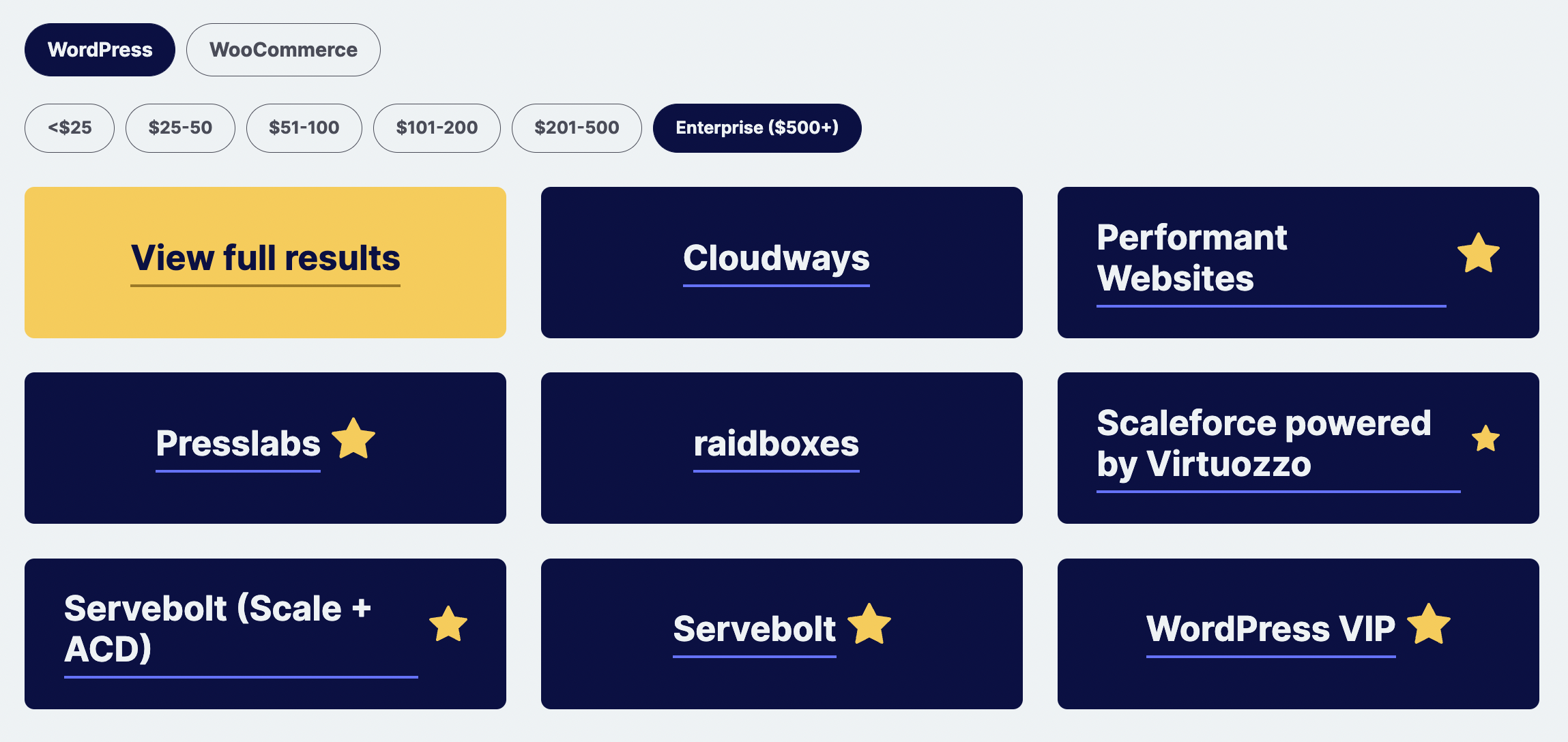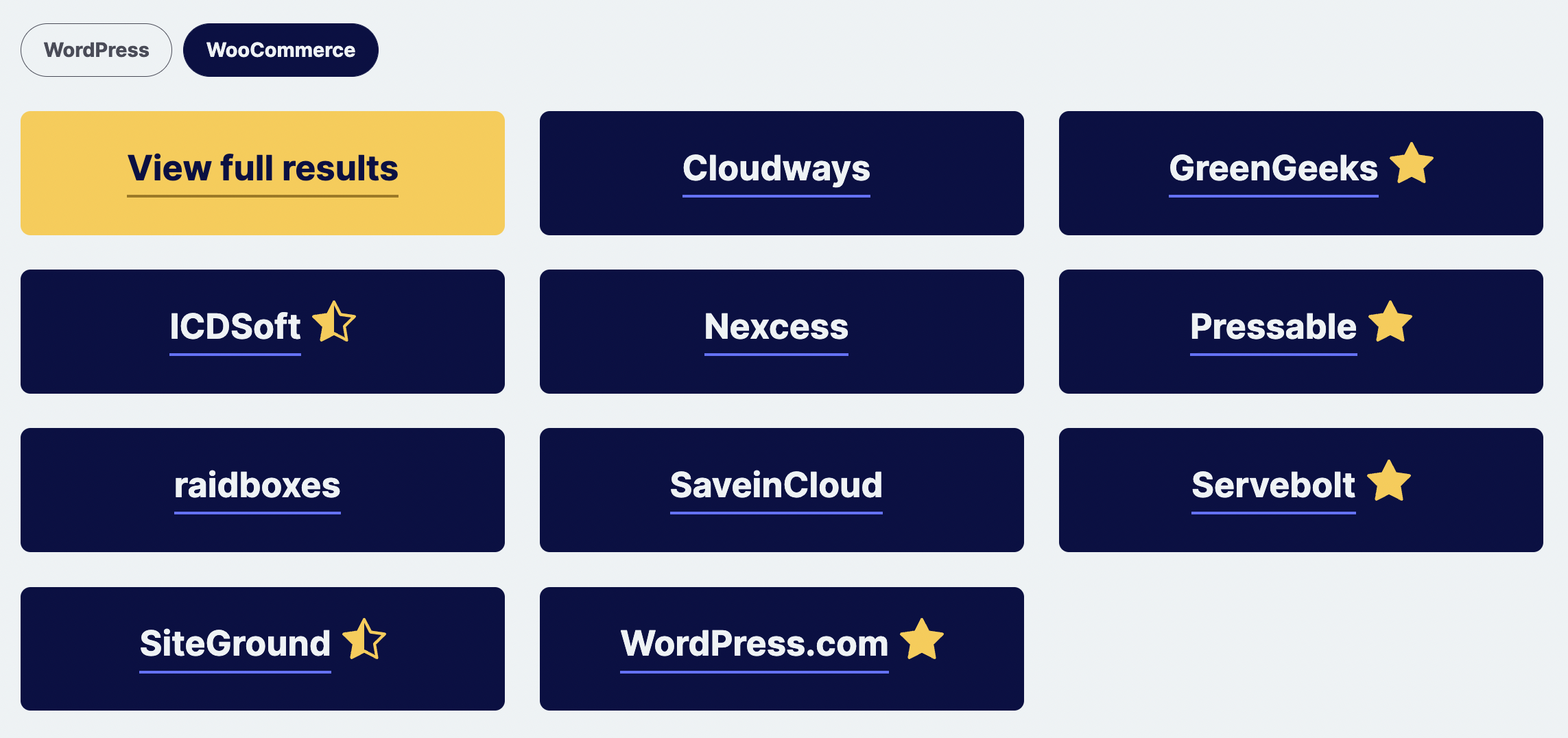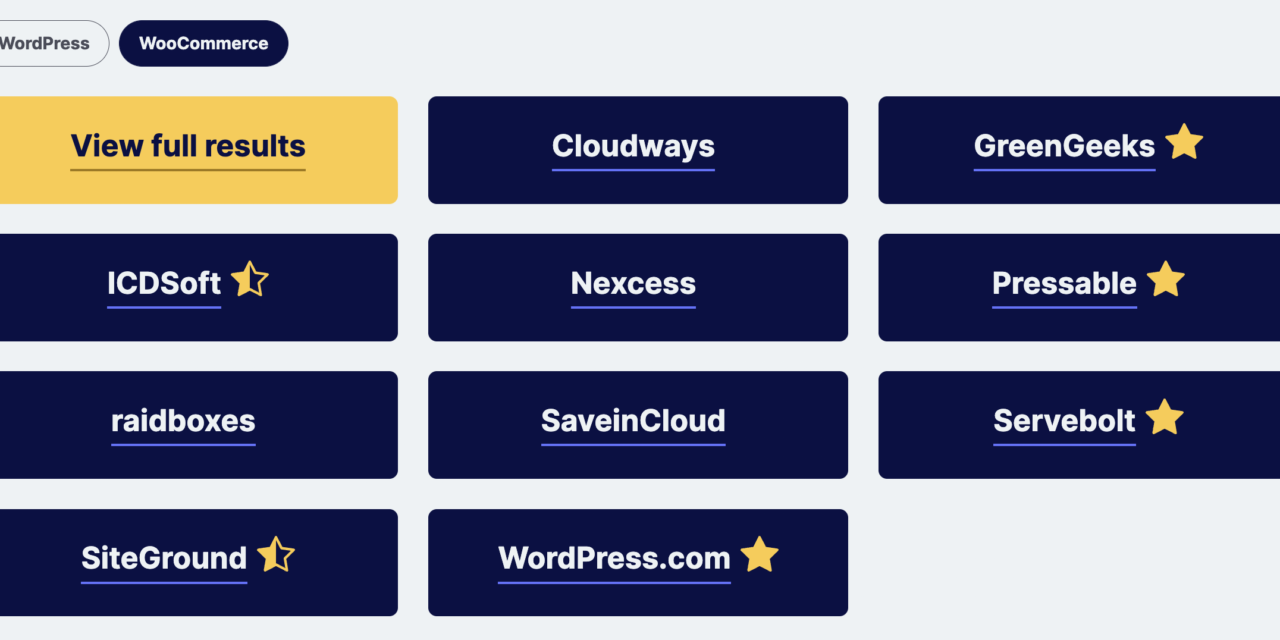Kevin Ohashi from Review Signal has published the 2022 WordPress and WooCommerce hosting performance benchmarks. These benchmarks are some of the most trusted review sources in the hosting industry due to Ohashi’s transparent methodology. No hosting company sponsors the work. Instead, Ohashi charges a standard, publicly documented fee for participation that covers the cost of the tests.
In 2022, Ohashi tested 33 companies with 79 different plans across seven different price tiers, including the WooCommerce tier.
If speed is one of your chief concerns when selecting a hosting company, these performance reviews may be of interest. The benchmarks include a Load Storm test designed to simulate real users visiting the site, logging in, and browsing (uncached performance). They also test cached performance, SSL, WP queries per second, performance on some computational and database operations, and a WebPageTest that fully loads the homepage and records how long it takes from 12 different locations around the world.
The results are easy to examine at a glance. Top Tier (Full Star) status is given to hosts that perform well under the battery of tests:
Top Tier WordPress Hosting (Full Star)
This is awarded to companies who maintain 99.9% uptime throughout the entire testing and show little to no performance degradation during load testing, primarily focused on error rate and consistent response times. Error rates above 0.1% and response times above 1000ms* will keep a company away from achieving Top Tier marks.
In the budget <$25/Month category, the 2022 Top Tier winners included 20i, 34SP, EasyWP by Namecheap, Eco Web Hosting, GreenGeeks, HostXNow, ICDSoft, LightningBase, MechanicWeb, Pressable, SiteGround, and WPX.

On the other end of the spectrum, in the Enterprise tier ($500+/month), there were far fewer participants but the majority of them achieved Top Tier status, including Performant Websites, Presslabs, Scaleforce powered by Virtuozzo, Servebolt (Scale + ACD), Servebolt, and WordPress VIP.

This is the second year Ohashi has performed WooCommerce hosting reviews. The tests are performed on a WooCommerce dummy website with Storefront set as the theme and sample products loaded.
Top Tier winners for WooCommerce hosting include GreenGeeks, Pressable, Servebolt, and WordPress.com. Two others achieved Honorable Mentions – ICDSoft and SiteGround.

Clicking on “View full results” for any of the tiers will show a detailed breakdown of all the tests with comparison charts and summaries for each host participating.
WordPress Hosting Is Getting Faster
“I think the most remarkable trend is how fast things are getting,” Ohashi said. “For example if we look at the enterprise tier from 2021 vs 2022, the fastest average response time (Static test) was 9ms and 6.4ms and p95 was 41ms to 20ms. The 3rd fastest p95 last year was 65ms which would be 7th (out of 9) fastest this year if you moved it.
“Despite the numbers already being staggeringly fast already, the whole cohort accelerated even faster.
“And it’s not just at the high end, at the <25 tier, on the Static test there was 1 company with under 100ms p95 last year (CynderHost – 61ms). This year you have three – Pressable (18ms), SiteGround (67ms), WPX (89ms).
“At the slow end, the slowest <25 Static average response time was 267ms, last year there were 5 companies with equal or slower averages (max being over 1200ms).”
Ohashi said there may be some selection bias as companies who do badly may not want to participate again and filter themselves out.
“But some of those companies improved quite a bit like GoDaddy was 295ms to 234ms which is a 61ms improvement,” he said. “I want to call out the companies who have sometimes struggled on these tests, and keep participating. I respect them and it makes me happy to see them making continuous improvements.
“While I do give awards for companies who do well, I think it’s important to recognize that not doing as well isn’t a failure, it’s about what the companies do with that information and how they improve their services. Overall, it seems everyone is improving and that’s a win for hosts and consumers alike.”
Ohashi said one of his goals for 2022 is talking with the companies to explain the value of participating. Beyond the value of the benchmarks themselves, these reviews help the ecosystem push for better performance. One of Ohashi’s testing policies is a big driver for this:
“The hosting packages are as close to default as possible. In some circumstances where turning on performance enhancements is very simple, e.g. clicking an option to turn on caching, this will be done. These changes must be obvious or communicated clearly in the welcome email so that every user is guaranteed to at least be presented the option. Otherwise everything is as-is for new customers upon sign up to avoid, as much as possible, the extra benefit of companies knowing they are being tested.”
Companies that do well in these tests are those that have embraced performance by default, so that any performance improving technology is already turned on or presented proactively to customers.
“One of the things I got a degree in is economics and we talk about opt-in vs opt-out policies like organ donation and how defaults can drastically influence outcomes,” Ohashi said. “By forcing opt-in performance improvements, I don’t know how many thousands, or even hundreds of thousands of sites have been positively impacted by these benchmarks without ever being aware because hosting companies are forced to enable better defaults.”
Ohashi also works with the companies on things that do not make it into the benchmarks, such as pointing out issues with onboarding/UI/UX experience and reporting bugs.
“I’ve probably used more different WordPress hosting companies than anyone else in the world at this point (I have to be in the top 10 doing these benchmarks for a decade right?),” he said. “If I cannot figure out how to do something in your system, it’s probably your system, not me. I truly want to see everyone do better, because everyone wins in that scenario and I will try to help as much as I can to make that happen.”
Check out the 2022 WordPress Hosting Performance Benchmarks for a more detailed breakdown of all the different pricing tiers and a full explanation of the testing methodology. Past years’ benchmarks are also available on the website. This year Load Storm went out of business, so Ohashi replicated the tests into k6. All of his load testing scripts are open source and available on GitHub, so others are welcome to use them for testing their own sites or building their own testing suites.










